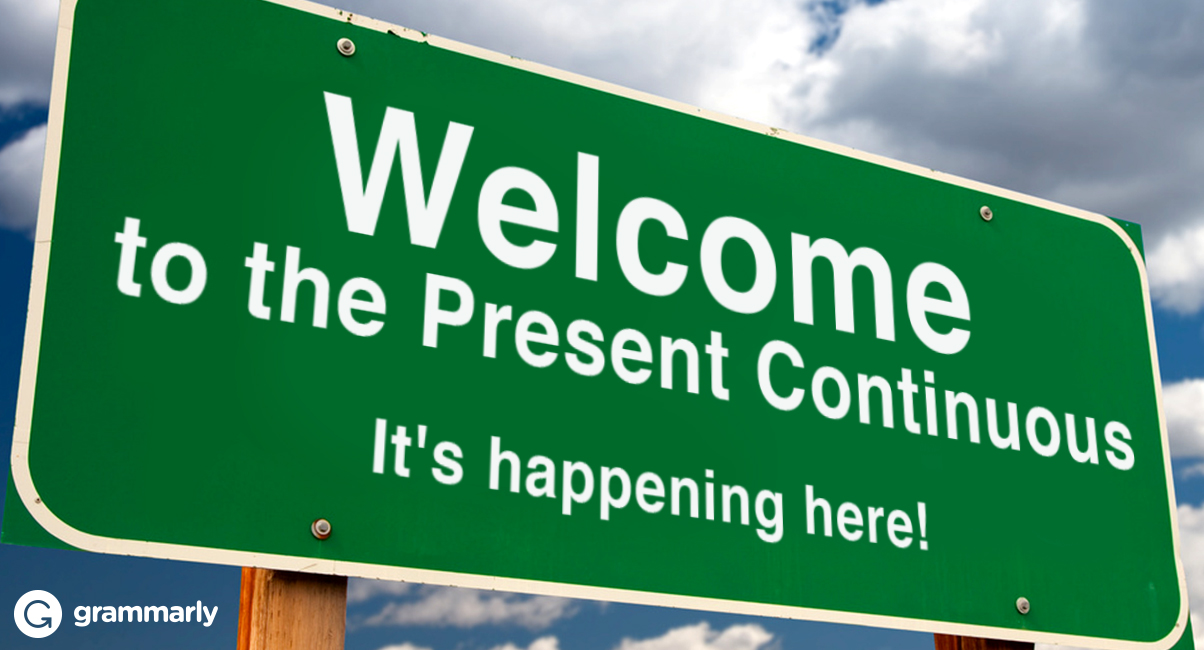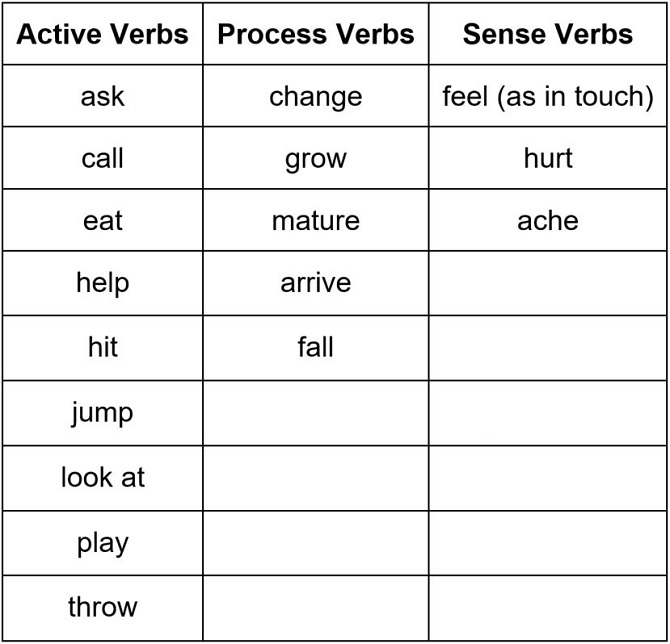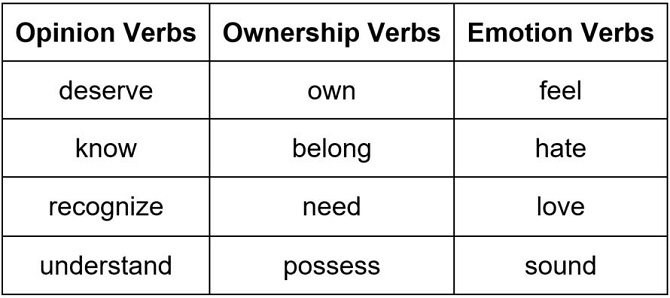Present Continuous
Present Continuous
The present continuous verb tense indicates that an action or condition is happening now, frequently, and may continue into the future.
The Present Continuous Formula: to be [am, is, are] + verb [present participle]
Key words: Verb, present participle, tense, dynamic verbs, stative verbs
Here’s a tip: Want to make sure your writing always looks great? Grammarly can save you from misspellings, grammatical and punctuation mistakes, and other writing issues on all your favorite websites.
The present continuous (present progressive) tense is a way to convey any action or condition that is happening right now, frequently, and may be ongoing. It adds energy and action to writing, and its effect helps readers understand when the action is happening. Imagine Aunt Christine has surprised her nephew Scott for his birthday and is going to take him out to his favorite restaurant, Polly’s Pancake Diner. If I wanted to tell the story after it happened, I’d use the past tense:

But what I really want to convey is how the event unfolded, showing the action as it is happening:
From this narrative point of view, the action is immediate and continuous; there’s momentum. Sometimes writers use this tense to add suspense or humor in fictional pieces. What kind of pancakes will Scott and his aunt order? The suspense is killing me!
The Present Continuous Formula
To form the present continuous, follow this formula:
To Be [Am, Is, Are] + Verb [Present Participle]
When to Use the Present Continuous Tense
Use the present continuous tense with the appropriate “to be” verb and a dynamic verb.
A dynamic verb shows action and/or process. For example,
When Not to Use the Present Continuous Tense
Do not use the present continuous tense with stative verbs. Stative verbs show a state of being that does not show qualities of change. These verbs can stay in the simple present. For example,
Here, the stative verb to prefer shows opinion, and therefore should not be conjugated into the present continuous. Stative verb categories include emotion (to love), possession (to belong), and thoughts (to recognize), and none of these should use the present continuous form.
The Exception to the Rule
Some verbs can be both dynamic and stative! Think about the verbs to be and to think.
In its dynamic form, the verb to be can show action:
But in its stative form, the verb to be is awkward if conjugated in the present continuous.
Here are some more examples:
Idiomatic Expressions and Style
English can be confusing; what is grammatically correct isn’t always what you might hear in music, in advertisements, or during regular conversations. The present continuous is often used incorrectly. Consider the popular slogan for McDonald’s: “I’m Lovin’ It.” This is a grammatically incorrect sentence because to love is a stative verb, so why would McDonald’s use it in their advertisements?
This marks the difference between grammar and style. Using the present continuous as a means to exaggerate is a stylistic trend, and as such, it would not be surprising to hear this conversation:
Here Scott and his Aunt display their excitement in a silly way, emphasizing their feelings. On the other hand, you would never hear a native speaker say these sentences:
The Final Say
If you are teaching English or learning it, I’d recommend simply sticking to grammatically correct constructions and leaving the idiomatic expressions to the creators of advertisements and song lyrics. In formal writing, the experts recommend that when you can use fewer words to express a thought, you should, so use the present continuous sparingly—short and sweet can’t be beat!
Common Construction in the Present Continuous Tense
Common Dynamic Verbs that USE the Present Continuous
Common Stative Verbs that DO NOT USE the Present Continuous
![]()








